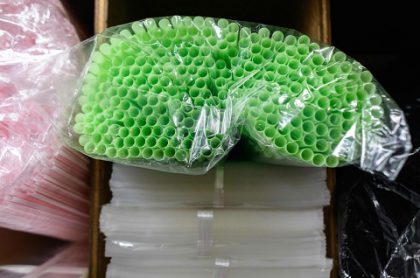 On January 1, 2019, a ban on plastic straws in restaurants and other service businesses began in Washington, D.C.
On January 1, 2019, a ban on plastic straws in restaurants and other service businesses began in Washington, D.C.
At the beginning of July 2018, Seattle became the largest U.S. city to ban plastic straws.
They’re not alone
Starbucks plans to phase out plastic straws by 2020. McDonald’s recently announced it will ban plastic straws at its U.K. and Ireland restaurants. Bon Appétit Management, a food service company with 1,000 U.S. locations, announced last May it will phase out plastic straws. Alaska Airlines will be one of the first airlines to phase out plastic straws and stirrers, in part thanks to an environmentally conscious girl scout.
These groups are responding to public outcry demanding action against a product that, on one hand, seems very simple—but which is harming the world’s oceans, experts warn.
In just the U.S. alone, one estimate suggests 500 million straws are used every single day. One study published earlier this year estimated as many as 8.3 billion plastic straws pollute the world’s beaches.
Eight million tons of plastic flow into the ocean every year, and straws comprise just 0.025 percent of that.
But that hasn’t stopped the straw from becoming the major focus of recent environmental campaigns. This is in part because, for most able-bodied people, the straw is something you can easily do without. Eliminating plastic straw usage rarely requires a drastic change in behavior.
But if they’re so easy to do without, how did they become so ubiquitous in the first place?
Please read more from the: “National Geographic”
************************
Why Should Be “A Paid-Subscriber” and “Advertiser”
Keeping an independent media in countries that impose limitations on self supporting media, will help to support the humankind’s freedom. If you believe it, please act to be a PRO-MEMBER by clicking “HERE“, or:
Please send your PR’s directly to the email address of the Chief-Editor in order to be published at once in the world via ” http://pimi.ir ” The address is: aasaatnia@live.com.













